Pork Tenderloin Recipe
I’m always looking for new recipes, and I found this one for Pork Tenderloin with Lemon, Capers, and Olives on a podcast from Whole Foods Market. It looked good, and I liked the technique of cutting a pork tenderloin into pieces and then flattening them into cutlets, similar to what you might do with chicken cutlets.
This is the first time I’ve prepared pork tenderloin this way, and I will be trying it again. It’s a great alternative to grilling or roasting whole pork tenderloins.
This recipe is for people who like a strong, lemony flavor. The lemon jumps out and bites you in the mouth. Outstanding.
The podcast recipe served the pork with sautéed broccoli rabe, but I substituted broccolini. Broccolini, if prepared right, is a great alternative to spinach—broccoli rabe or broccoli—and is full of healthy vitamins. Broccolini is a hybrid of broccoli and Chinese broccoli in Japan.
We also served mashed sweet potatoes, which were delicious. I have to get the recipe from my wife and ask her to correct it. Made with honey, they were perfectly “sweet.”
My only advice for this meal is to prep your ingredients before you start (mise en place). This recipe requires a lot of prep work. My wife and I made this during the week, and we were running late, so we cooked while prepping.
A couple of the cutlets burned because I was not paying attention while preparing the broccolini. It’s not a big deal, but having those ingredients ready to go is better.
Also, because it was just the two of us (my kids ate the pork without the sauce), I cut the butter by two-thirds. However, if you were making this for four to six, you would want to use the entire amount, or you won’t have enough sauce.
Pork Tenderloin
Pork tenderloin, often hailed as the “filet mignon of pork,” is a culinary delight cherished for its tender texture and mild flavor. Derived from the pig’s loin, this cut is exceptionally lean and boasts a tender quality that lends itself well to various cooking methods. Its versatility in the kitchen makes it a favorite among chefs and home cooks alike.
When preparing pork tenderloin, one can opt for simplicity or get creative with flavors. A classic approach involves seasoning with salt, pepper, and perhaps some herbs like rosemary or thyme, then roasting or grilling until perfectly cooked. The result is succulent meat with a subtle sweetness that pairs beautifully with myriad sides, from roasted vegetables to mashed potatoes.
Pork Medallions
Pork medallions are small, round pork tenderloin slices typically cut crosswise. They are prized for their tenderness and versatility in cooking, making them a popular choice for various dishes.
To create pork medallions, the pork tenderloin is usually trimmed of any excess fat and silverskin before being sliced into rounds of uniform thickness, typically about half an inch thick. This results in tender, bite-sized pieces that cook quickly and evenly.
Pork medallions can be prepared using various cooking methods, including pan-searing, grilling, roasting, or braising. They can be seasoned simply with salt and pepper or marinated beforehand to infuse them with additional flavor. Due to their small size, pork medallions are often cooked to medium or medium rare to ensure they remain juicy and tender.
These versatile cuts of pork can be served on their own as a main dish or incorporated into a variety of recipes, such as stir-fries, salads, sandwiches, or pasta dishes. Their mild flavor allows them to pair well with a wide range of sauces, herbs, and spices, making them a favorite ingredient for home cooks and professional chefs alike.
Buttermilk
Despite its name, buttermilk is not actually made from butter. Traditionally, it was the liquid left behind after churning butter from cream. Today, it’s mostly produced by adding lactic acid bacteria to milk, which thickens and ferments it, giving it its tangy flavor and thicker consistency.
This versatile ingredient is a staple in many kitchens worldwide, prized for its ability to tenderize, flavor, and leaven a wide range of dishes. In baking, buttermilk acts as a tenderizer, helping to create moist and tender cakes, biscuits, and pancakes. Its acidity also reacts with baking soda to produce carbon dioxide gas, which helps baked goods rise, resulting in light and fluffy textures.
Buttermilk’s tangy flavor adds depth to savory dishes as well. It’s commonly used as a marinade for chicken, pork, or fish, imparting a subtle tang and helping to tenderize the meat. In dressings, sauces, and soups, buttermilk adds a creamy texture and bright flavor that balances rich and savory ingredients.
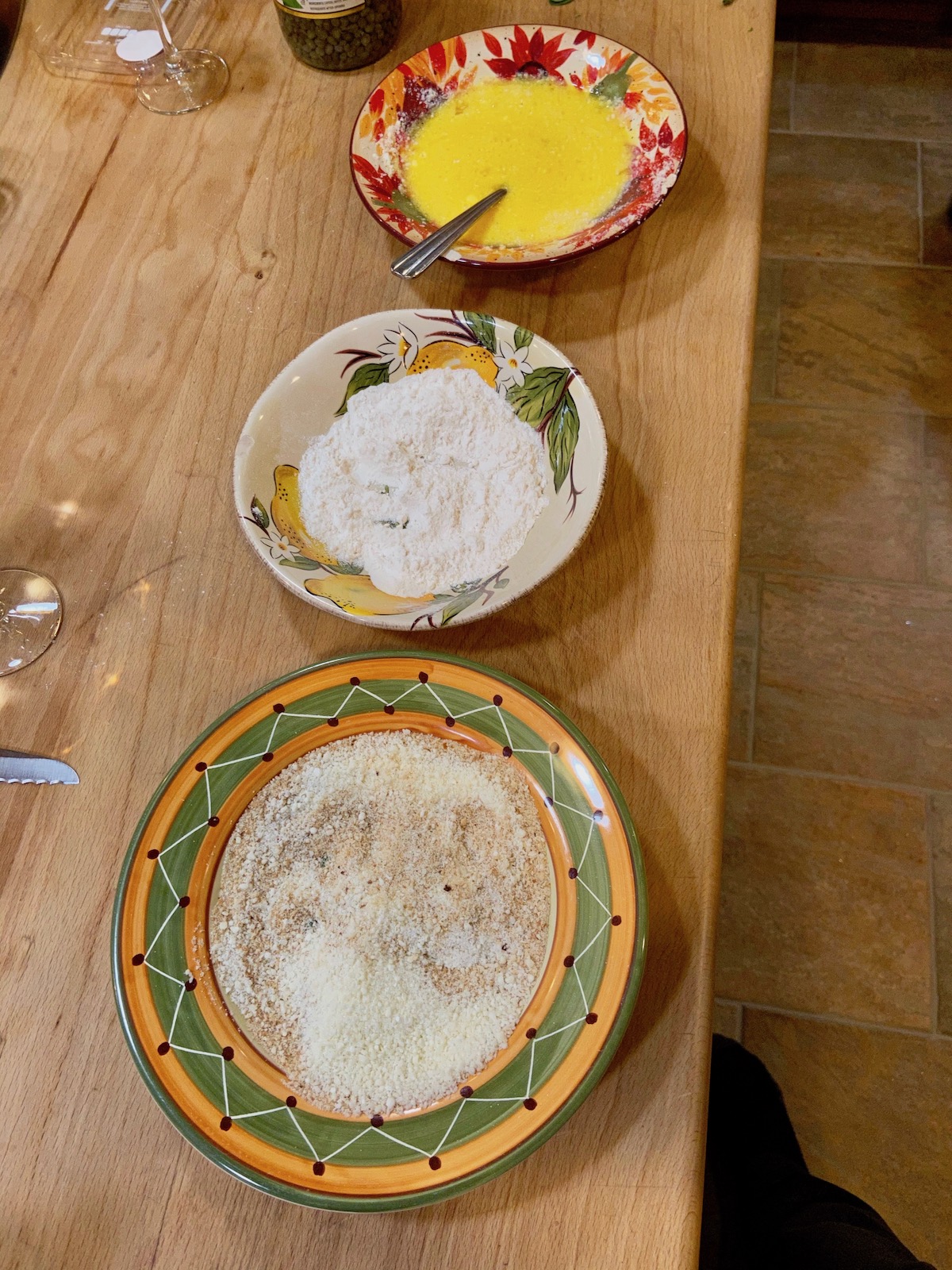
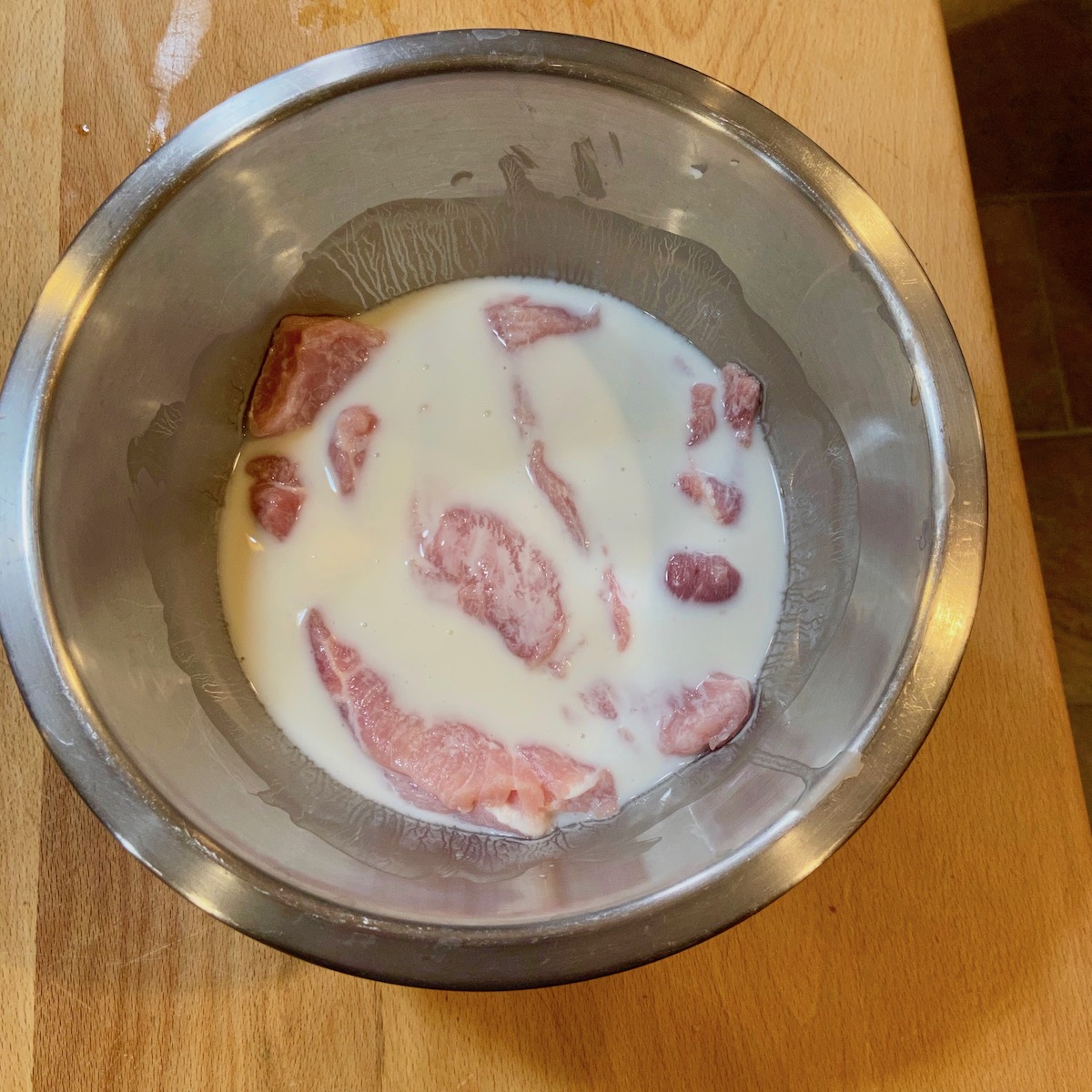
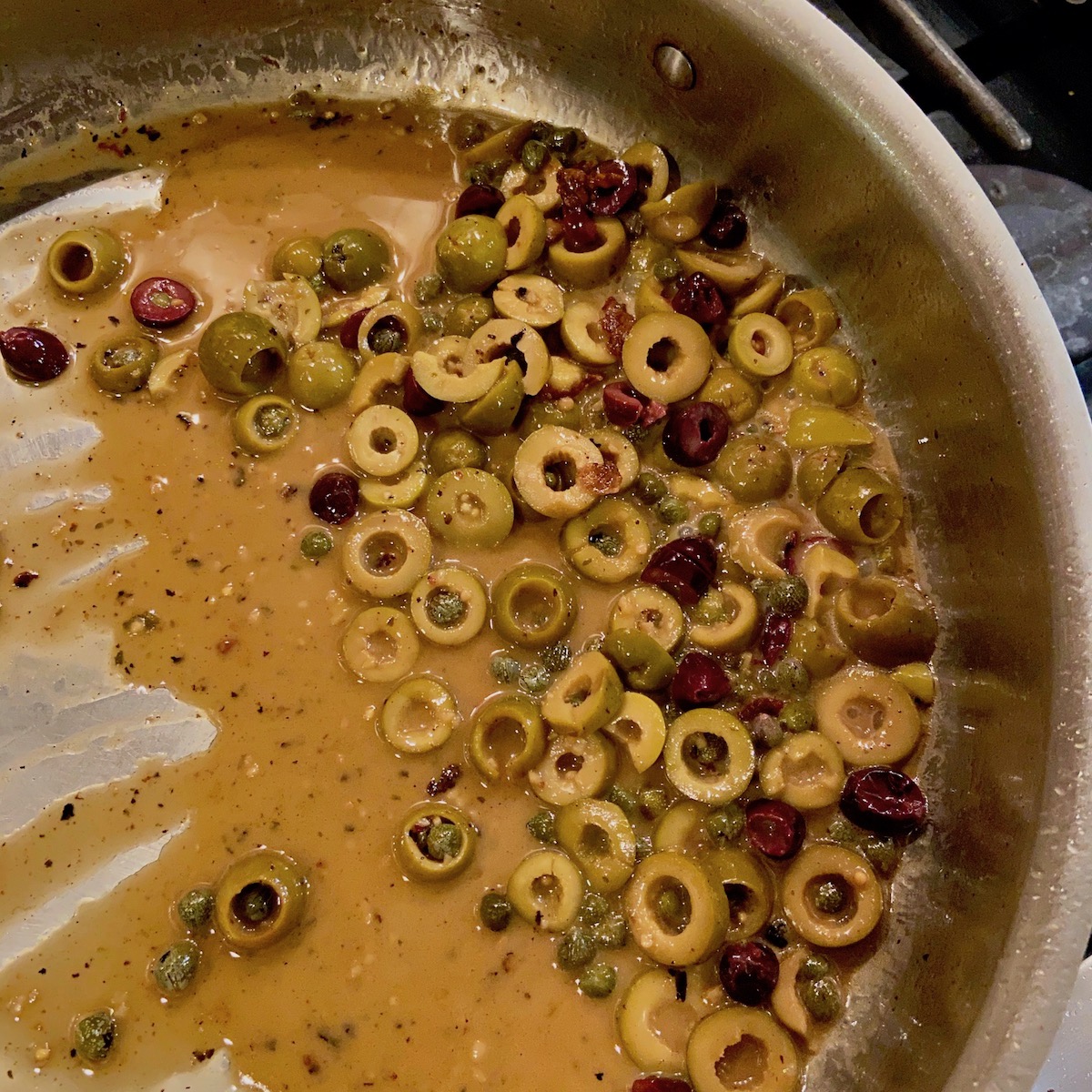
Pork Tenderloin with Lemon, Capers and Olives
Ingredients
- 1 whole pork tenderloin sliver skin removed
- ½ cup buttermilk
- 1 cup flour for dredging
- 1 teaspoon salt to season flour
- 4 whole eggs
- ¾ cup fresh Pecorino Romano or Parmesan, grated
- 2 cups breadcrumbs
- 1 tablespoon fresh oregano chopped
- ½ cup canola oil
- 2 tablespoons olive oil extra virgin
- 2 tablespoons garlic sliced thinly
- 1 small lemon thinly sliced
- 1 tablespoon capers drained
- ¼ cup mixed olives pitted and sliced
- ⅓ cup white wine
- 2 tablespoons lemon juice freshly squeezed
- 2 tablespoons flat leaf parsley chopped
- freshly ground pepper to taste
- ⅓ cup butter cold, cut into small pieces
Instructions
- Slice the pork tenderloin into 1½ ounce pieces (about 1½ inches wide). Using a meat pounder or meat mallet, flatten each piece of tenderloin. Be careful not to over pound the meat or it will break apart and turn into mush. Pound the meat toward and away from your body, never straight down onto the meat.
- Put the cutlets into a bowl and cover with buttermilk. Refrigerate the meat for at least 30 minutes up to a couple of hours. I have read that the calcium in the buttermilk is supposed to activate enzymes in the meat that break down proteins and I've also read buttermilk contains lactic acid that helps dissolve the meat's proteins. Not sure which is correct, but it works.
- While the cutlets are marinating, get the rest of your ingredients ready. We used shallow soup bowls to layout the dunking stations. One bowl contained the flour seasoned with salt, another holds the eggs that are beaten and then seasoned with ½ cup of cheese and the last bowl has the breadcrumbs mixed with the remaining ¼ cup cheese, oregano and salt.
- Using one hand for dredging in the flour and the other for dredging in the eggs and breadcrumbs, start dredging each cutlet in the flour being sure to shake off any extra before dredging in the eggs.
- Finally coat the pork with breadcrumbs and set aside until all are done.
- Heat the biggest sauté or frying pan you have and add the canola oil. If your pan is not big enough to sauté all the cutlets without over crowding (steams instead of sautés), cook the pork in batches until nicely browned, about 2 to 3 minutes per side. Transfer the cutlets to a plate and reserve.
- Wipe out the pan you are using or start with a clean pan and heat the olive oil over medium heat. Add the lemon slices and garlic and cook for 3 minutes.
- Add the capers and olives, then the white wine and cook until the sauce is reduced by half.
- Add the lemon juice and parsley. Season the sauce with freshly ground pepper.
- Add butter in pieces, (this is called mounting) and whisk continuously until the sauce starts to thicken and has that glossy look.
- Taste and adjust seasoning with salt and pepper.
- Now add the cutlets back to the sauce to reheat for a minute or two.
- Plate the cutlets on top of or right next to the broccoli rabe, top with sauce and serve.

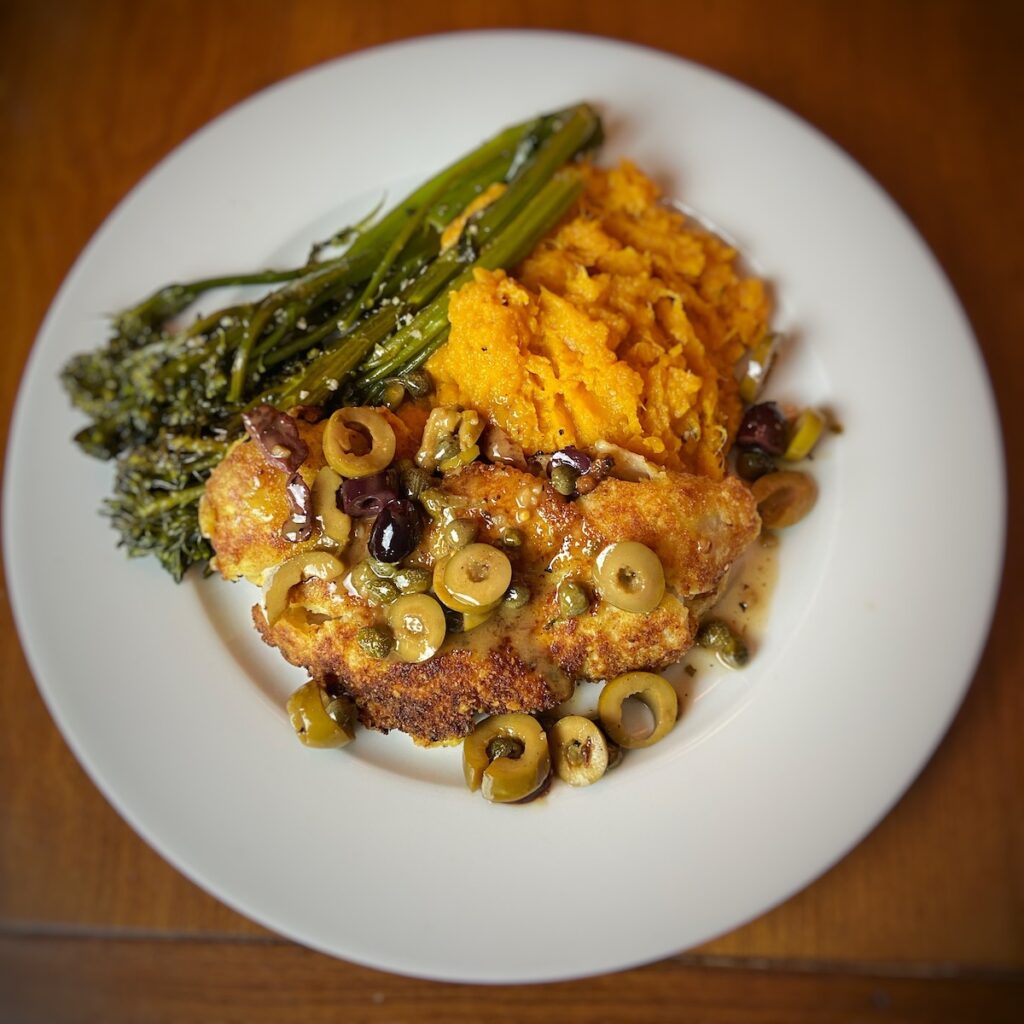
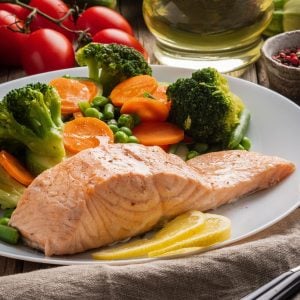
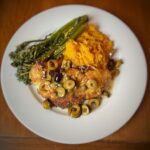
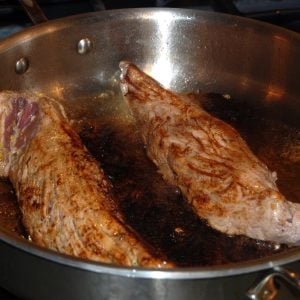
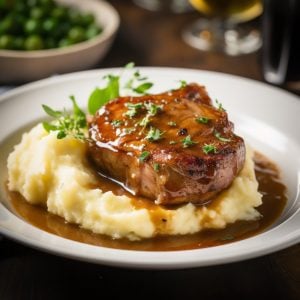
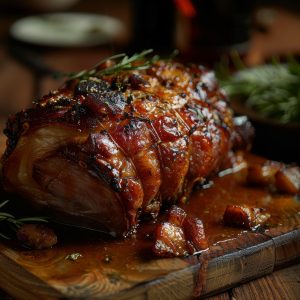
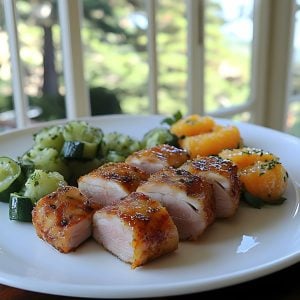
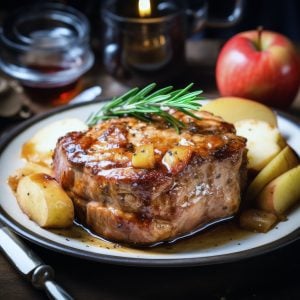
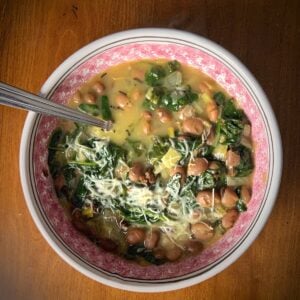
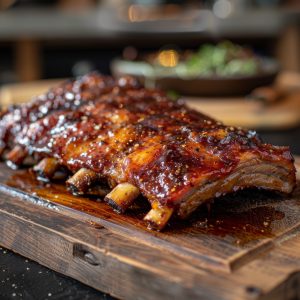
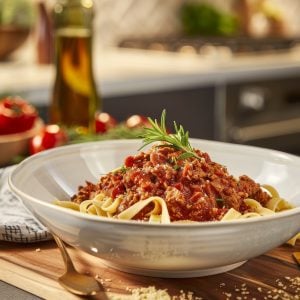


2 Responses
Yum, RG! Sounds like a take on chicken or veal piccata. It would probably be great with either of those meats or even turkey, too.
Looks great, will have to try this one, I currently make a variety of recipes using pork tenderloin “medallions”. They are tastier than typical pork tenderloin recipes as they get some good flavor from the sauteeing step and the sauce is more infused into each bite. Think Picatta, Marsala, etc. all great!